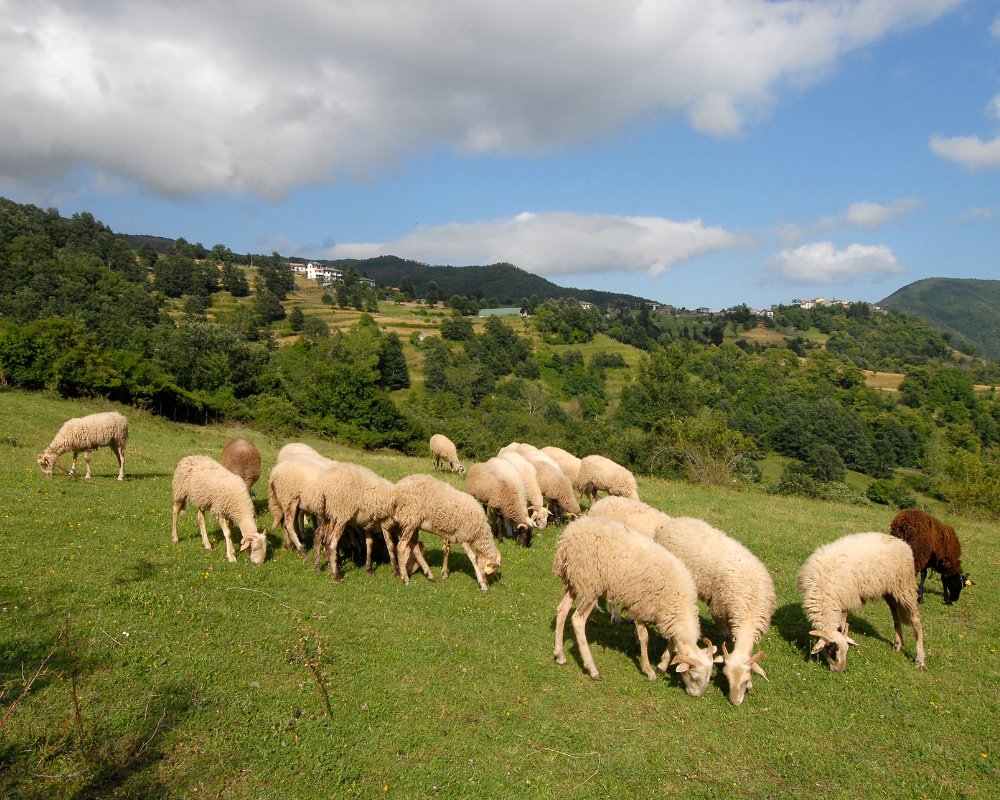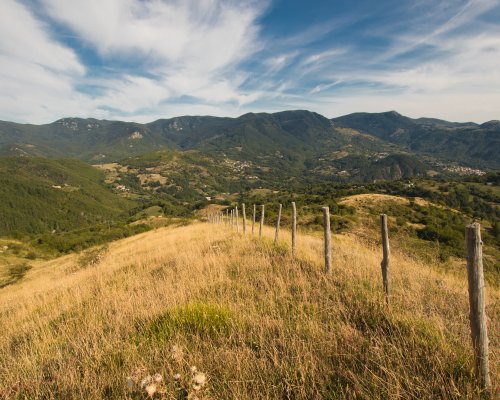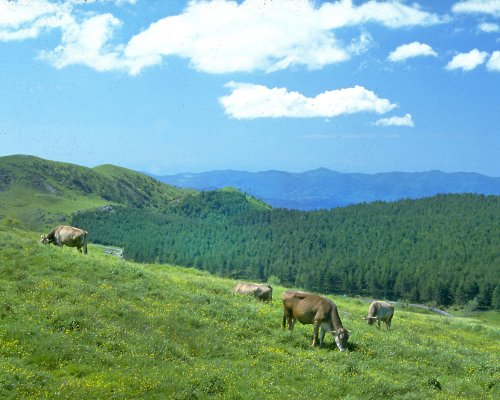A fascinating itinerary in Lunigiana
The Via Marchesana is an ancient route of about 250 kilometers (250 miles), crossing the valleys of the Apennines and involving as many as four regions: Lombardy, Emilia-Romagna, Liguria and Tuscany. The points of departure or arrival are Pavia, in Lombardy, and Aulla in Tuscany.
This "via dei Marchesi" owes its name to the fact that it ran right along the territories controlled by the Marchesi Malaspina; they themselves used the route to reach, from Mulazzo, their possessions in the valleys of Parma, Piacenza, and Lombardy. Moreover, it was profoundly strategic to avoid crossing those Lunigiana territories that could hinder their path.
The route, in fact, traces the "via dei monti" through the valleys of the Apennines that, in the 12th century, Marquis Obizzo Malaspina had Emperor Frederick Barbarossa take when Pontremoli closed the gates of his village, preventing his passage through the Via Francigena.
To walk along this route is to leave the better-known Francigena route and immerse oneself in a deeply evocative landscape of quiet beauty. Let's discover the Lunigiana territories crossed by the Via Marchesana on this 70-kilometer route.
The journey to Lunigiana, and to Tuscany, begins in the Valli di Zeri on the border between Tuscany, Liguria and Emilia: here it feels like going back in time, with small villages nestled in the green valleys of upper Lunigiana, where the mountains and their silence combine with history and typical cuisine. Even today, shepherds keep alive the traditions of transhumance and continue the breeding of Zerasca sheep. From the Passo dei Due Santi, a pass at 1392 meters formerly called Passo del Faggio Crociato and connecting the province of Parma to that of Massa Carrara, one can descend to discover the small and charming towns of Patigno, Noce, Coloretta and La Dolce and then arrive at the Bosco di Rossano, set in the valley of the Teglia stream.
The journey to Lunigiana, and to Tuscany, begins in the Valli di Zeri on the border between Tuscany, Liguria and Emilia: here it feels like going back in time, with small villages nestled in the green valleys of upper Lunigiana, where the mountains and their silence combine with history and typical cuisine. Even today, shepherds keep alive the traditions of transhumance and continue the breeding of Zerasca sheep. From the Passo dei Due Santi, a pass at 1392 meters formerly called Passo del Faggio Crociato and connecting the province of Parma to that of Massa Carrara, one can descend to discover the small and charming towns of Patigno, Noce, Coloretta and La Dolce and then arrive at the Bosco di Rossano, set in the valley of the Teglia stream.
Passing through the Valli di Zeri, we rejoin the route of the Alta Via dei Monti Liguri, which in this section marks the border between Tuscany and Liguria: thousands of kilometers between the Alps and the Apennines, between paths and mule tracks, between sky and sea, immersed in an area where driveways often cannot reach.
We leave the Alta Via dei Monti Liguri to descend to Parana, located in the municipality of Mulazzo, rich in small villages and picturesque castles. The village of Parana is nestled among woods of chestnut and turkey oaks, and is characterized by its large square overlooked by houses built of sandstone. Parana, like Montereggio, is also very famous for its booksellers who sold panniers of books to Italy and even America. Also of particular beauty are the Parana Waterfalls: a stunning waterfall formed in the Carlina Canal.
Passing through the Valli di Zeri, we rejoin the route of the Alta Via dei Monti Liguri, which in this section marks the border between Tuscany and Liguria: thousands of kilometers between the Alps and the Apennines, between paths and mule tracks, between sky and sea, immersed in an area where driveways often cannot reach.
We leave the Alta Via dei Monti Liguri to descend to Parana, located in the municipality of Mulazzo, rich in small villages and picturesque castles. The village of Parana is nestled among woods of chestnut and turkey oaks, and is characterized by its large square overlooked by houses built of sandstone. Parana, like Montereggio, is also very famous for its booksellers who sold panniers of books to Italy and even America. Also of particular beauty are the Parana Waterfalls: a stunning waterfall formed in the Carlina Canal.
Once past this section, one enters a new territory, which is characterized by the tranquility of the hilly landscape immersed in the green Lunigiana, on the right bank of the Magra River. Immediately one encounters the hamlet of Villa di Tresana, with its castle largely covered by climbing ivy that in the autumn period turns red, creating a striking effect. Next comes the village of Tresana, which is striking for its small size and striking image perched on the hill, with the ancient castle tower about 30 meters high dominating the entire Osca Valley. Among the marquises who ruled the fief is Guglielmo Malaspina, who in the 16th century received the imperial concession to mint coinage.
We then climb up to the village of Giovagallo with its castle, now abandoned, but where hovers the charm of the characters made famous by Dante Alighieri in the Divine Comedy, who owes much to Lunigiana: Marquis Moroello Malaspina, lord of these lands, is mentioned in Canto XXIV of the Inferno.
Once past this section, one enters a new territory, which is characterized by the tranquility of the hilly landscape immersed in the green Lunigiana, on the right bank of the Magra River. Immediately one encounters the hamlet of Villa di Tresana, with its castle largely covered by climbing ivy that in the autumn period turns red, creating a striking effect. Next comes the village of Tresana, which is striking for its small size and striking image perched on the hill, with the ancient castle tower about 30 meters high dominating the entire Osca Valley. Among the marquises who ruled the fief is Guglielmo Malaspina, who in the 16th century received the imperial concession to mint coinage.
We then climb up to the village of Giovagallo with its castle, now abandoned, but where hovers the charm of the characters made famous by Dante Alighieri in the Divine Comedy, who owes much to Lunigiana: Marquis Moroello Malaspina, lord of these lands, is mentioned in Canto XXIV of the Inferno.
After the villages of Tavella, Novegigola, and Meredo, one arrives in the scattered municipality of Podenzana, surrounded by greenery and composed of many small towns. Podenzana was built around the year 1000 on the right bank of the Magra River and was ruled by the Malaspina family since 1306 and then became an autonomous marquisate in 1536. In addition to the Castle of Podenzana and the 17th-century Sanctuary of the Madonna della Neve, the area is particularly renowned for its typical product, among the most beloved in Lunigiana: panigaccio. This ancient round-shaped bread baked in special terracotta texts red-hot over the fire is nowadays seasoned with oil and cheese, with pesto, with mushroom sauce or stuffed with sliced meats and cheeses and can be tasted in the many restaurants in the area.
After the villages of Tavella, Novegigola, and Meredo, one arrives in the scattered municipality of Podenzana, surrounded by greenery and composed of many small towns. Podenzana was built around the year 1000 on the right bank of the Magra River and was ruled by the Malaspina family since 1306 and then became an autonomous marquisate in 1536. In addition to the Castle of Podenzana and the 17th-century Sanctuary of the Madonna della Neve, the area is particularly renowned for its typical product, among the most beloved in Lunigiana: panigaccio. This ancient round-shaped bread baked in special terracotta texts red-hot over the fire is nowadays seasoned with oil and cheese, with pesto, with mushroom sauce or stuffed with sliced meats and cheeses and can be tasted in the many restaurants in the area.
The Via Marchesana ends at Aulla, a few kilometers from the border with Liguria, on a narrow strip of land at the confluence of the Magra River and the Aulella stream. Centrally located along the Via Francigena, and on the roads that led from Liguria and Lucca to the Cisa Pass, this small town has always been a fundamental place for the civil, commercial and religious life of the entire territory, even before the year 1000.
Among the town's sights, the Abbey of San Caprasio, dating back to 884 and now home to the Pilgrim's Museum of San Caprasio, and the Brunella Fortress, built on the promontory in the mid-16th century and housing the Natural History Museum of Lunigiana, are worth a visit.
The Via Marchesana ends at Aulla, a few kilometers from the border with Liguria, on a narrow strip of land at the confluence of the Magra River and the Aulella stream. Centrally located along the Via Francigena, and on the roads that led from Liguria and Lucca to the Cisa Pass, this small town has always been a fundamental place for the civil, commercial and religious life of the entire territory, even before the year 1000.
Among the town's sights, the Abbey of San Caprasio, dating back to 884 and now home to the Pilgrim's Museum of San Caprasio, and the Brunella Fortress, built on the promontory in the mid-16th century and housing the Natural History Museum of Lunigiana, are worth a visit.
For more information, please visit www.lunigiana.land/via-marchesana


